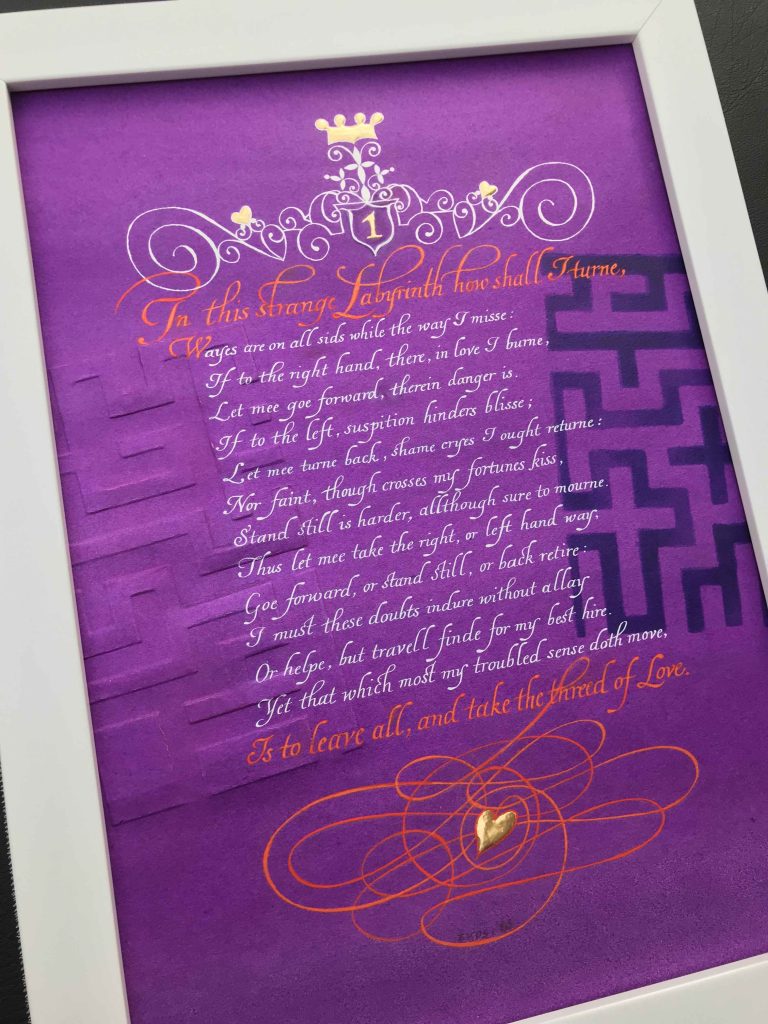
Els Van Den Steen 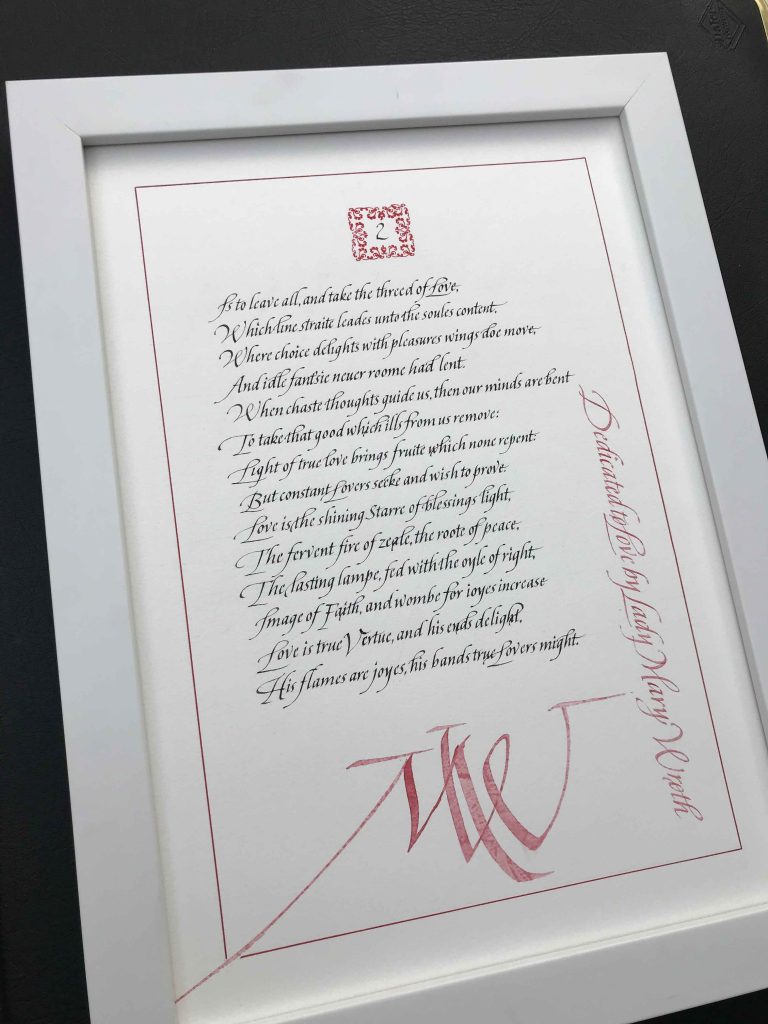
Colin Lumsden 
Colin Lumsden 
Julia Baxter 
Rosie Griggs 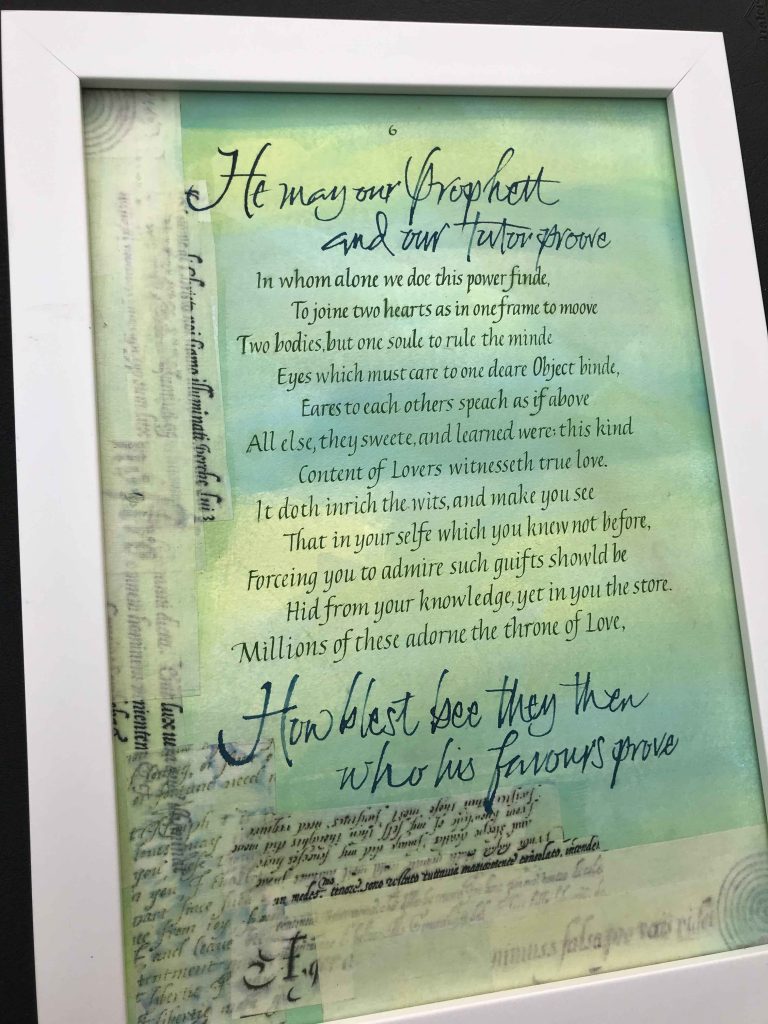
Jan Turner 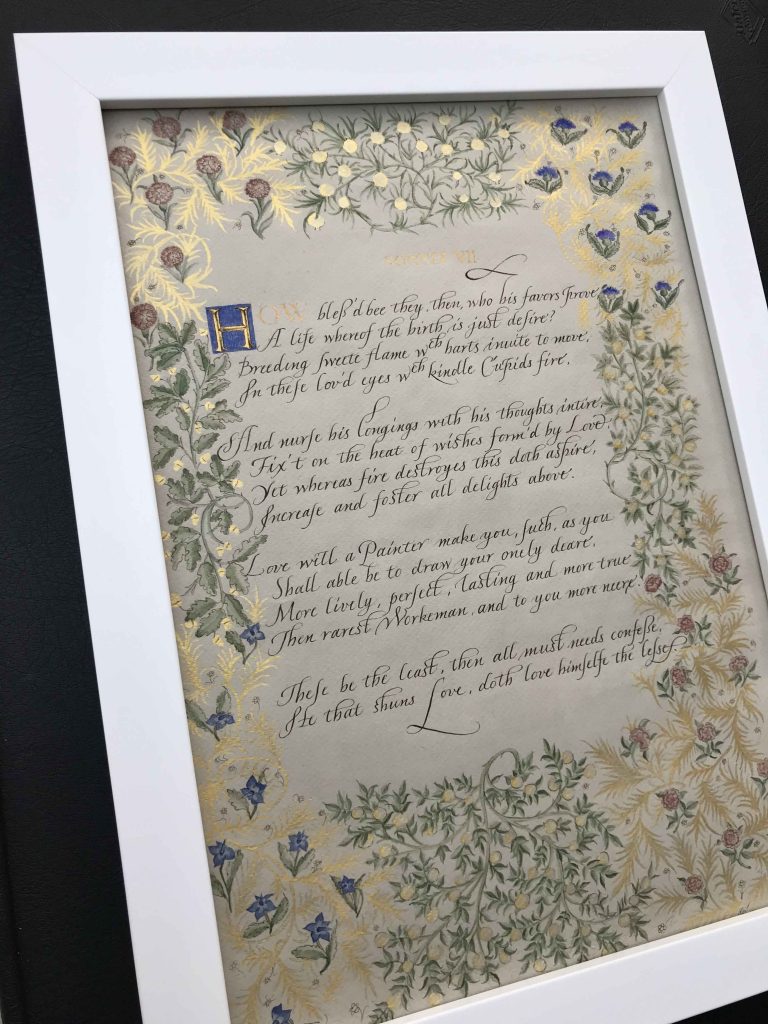
Mariko Mori Bain 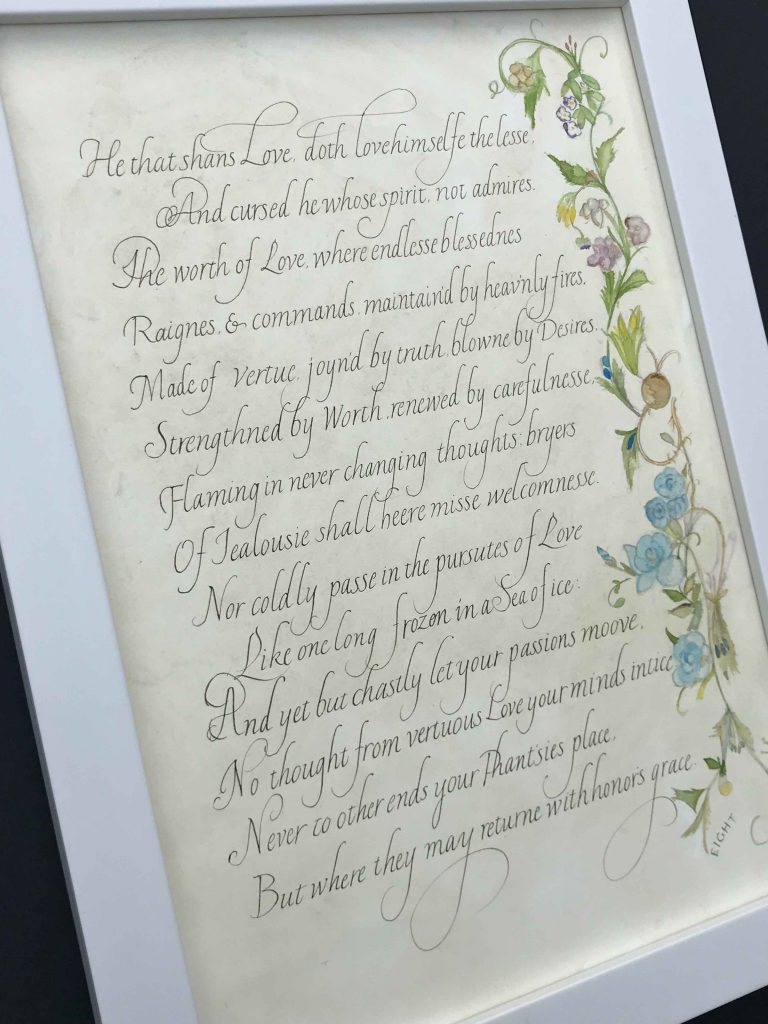
Naoko Munro 
Steve Eades 
Alison Millin 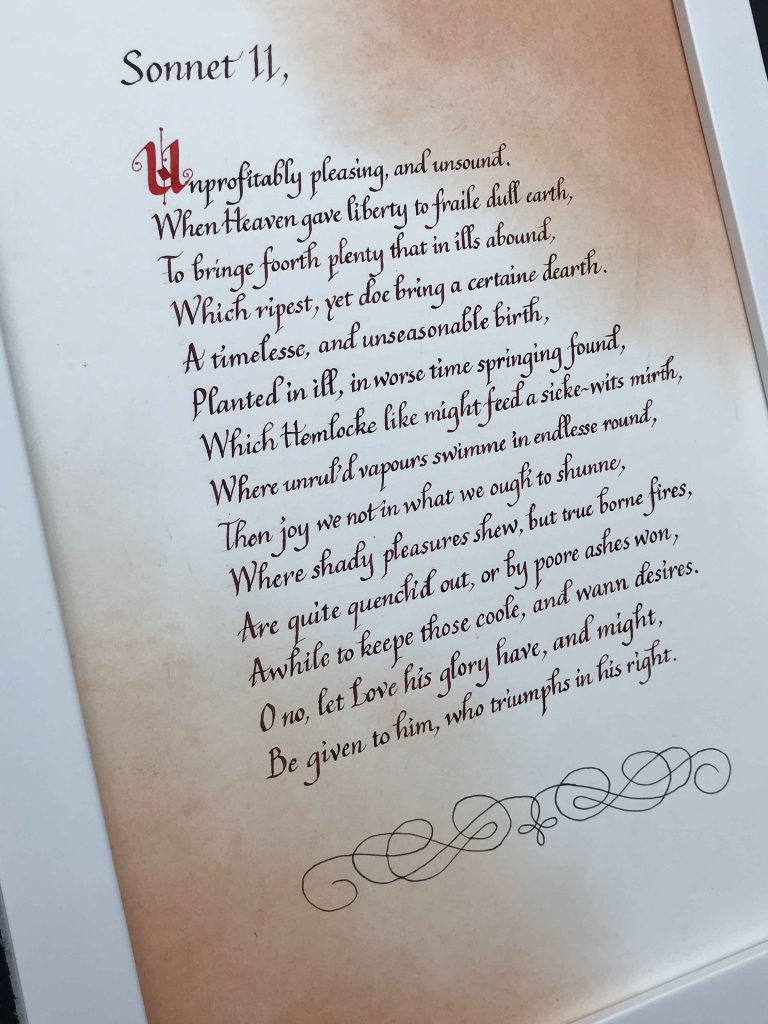
Steve Eades 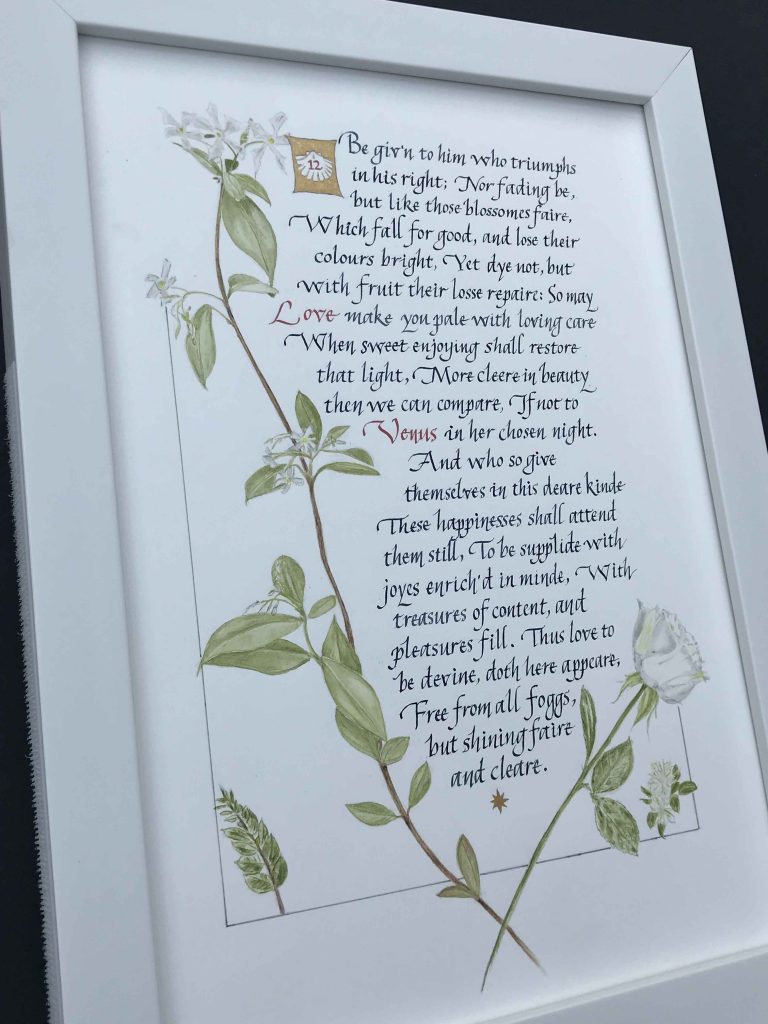
Frances Liddiard 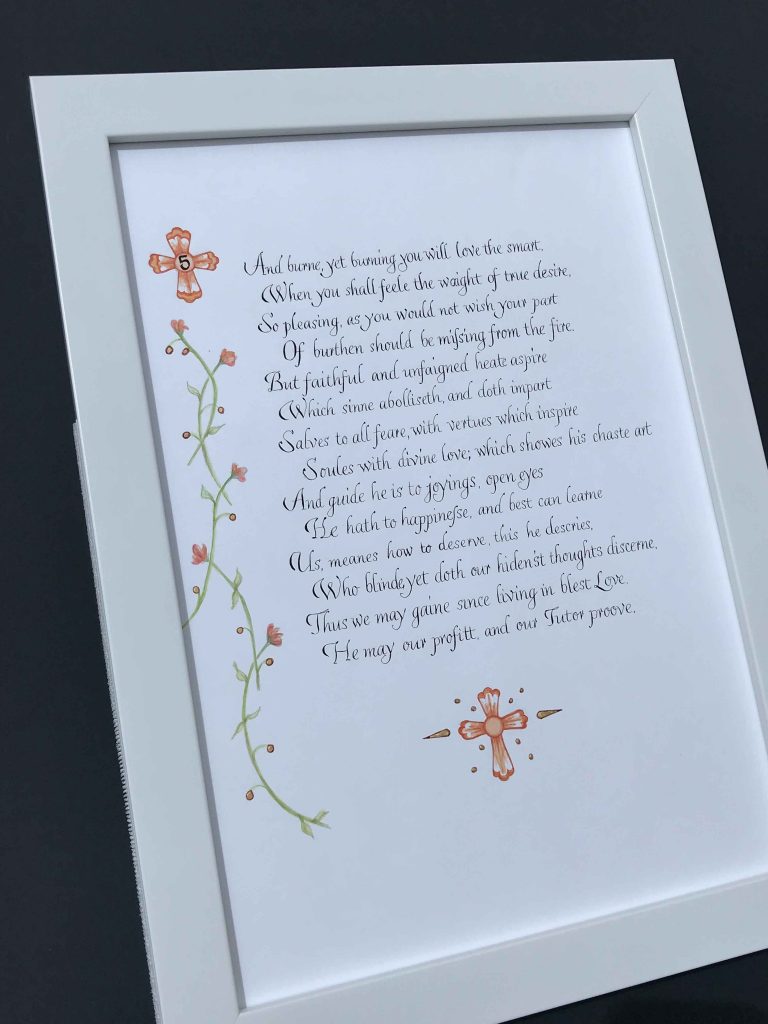
Rosie Griggs 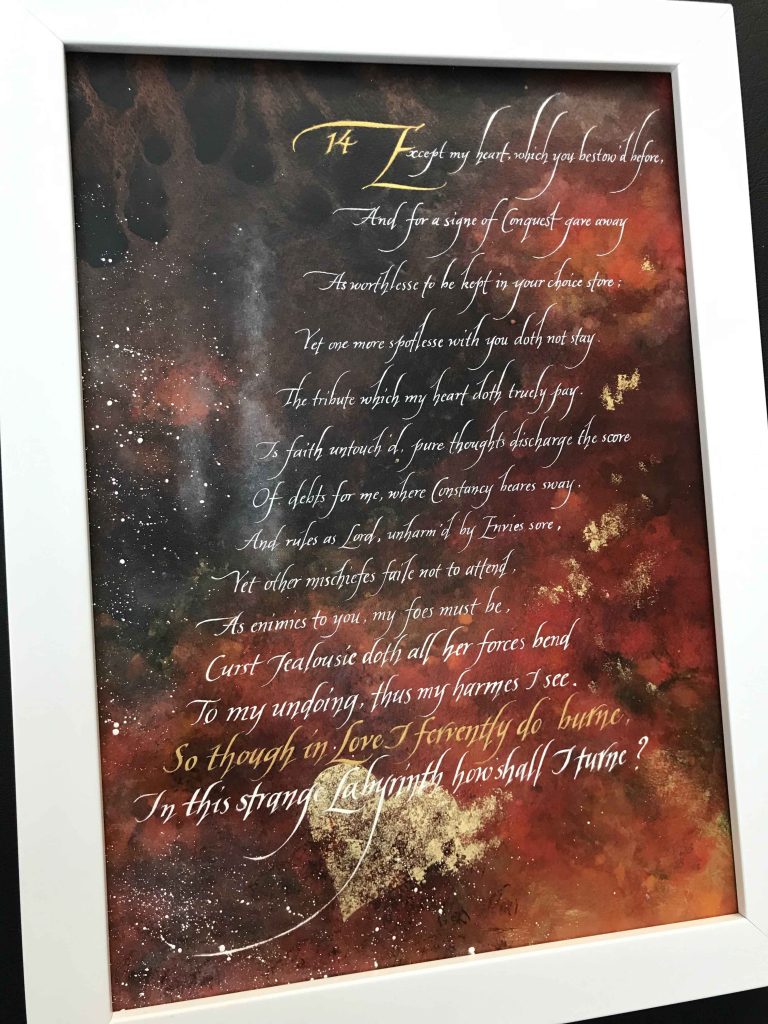
Els Van Den Steen
Photos from our “Crown of Sonnets” exhibition at Penshurst Place.
For more info, please read our Penshurst Place post.
A selection of calligraphic work demonstrating that calligraphy can be more than just writing. Calligraphers from the Cinque Ports Scribes have given their selected sonnet an artistic interpretation by using carefully chosen artistic elements, inspired by the words of the sonnets:
Sonnet 1 – calligrapher: Els Van Den Steen
The embossed labyrinth on the left and the printed labyrinth on the right refer to the corn maze at Penshurst Place; together with the entangled thread at the bottom of the sonnet they symbolise the unhappy and complicated love-life of Lady Mary Wroth when she writes: ‘In this strange Labyrinth how shall I turne?’. The pen decoration at the top of the sonnet is based on one of the iron gates at Penshurst Place. The gilding & the purple colour in the background symbolise the aristocratic society Lady Mary Wroth lived in.
Sonnet 4 – calligrapher: Julia Baxter
Watercolour background depicting some of the windows at Penshurst Place.
Sonnet 6 – calligrapher: Jan Turner
Collage of snippets from Renaissance Italic writing as used by Lady Mary Wroth. The green and blue colours symbolise the gardens and the rural surroundings of Penshurst Place.
Sonnet 7 – calligrapher: Mari Bain
Decorative border with pen drawings of flowers and fruit, inspired by the gardens at Penshurst Place.
Sonnet 12 – calligrapher: Frances Liddiard
Botanical painting of flowers, inspired by the gardens at Penshurst Place.
Sonnet 14 – calligrapher: Els Van Den Steen
Acrylic background in fiery colours inspired by the last 2 lines of this sonnet: ‘… and so in Love I fervently do burne, In this strange Labyrinth how shall I turne?’. The gilded heart symbolises Lady Mary Wroth’s heart and her desperate love-life.
